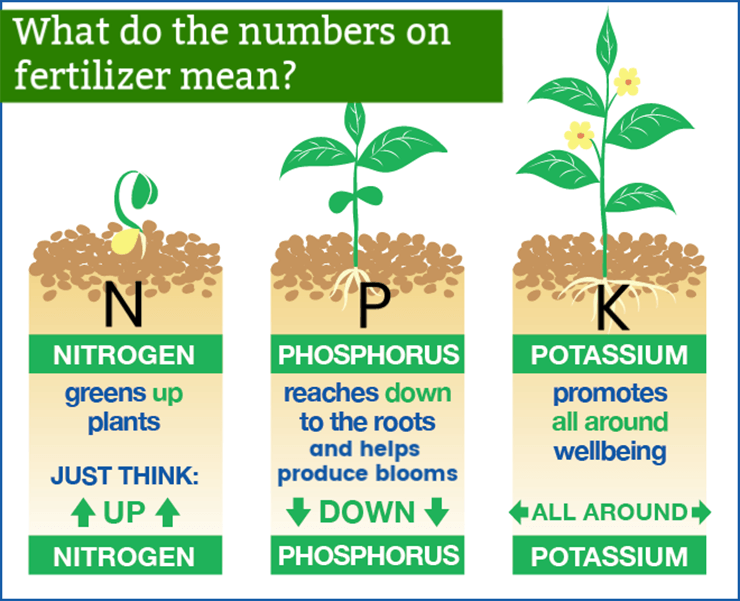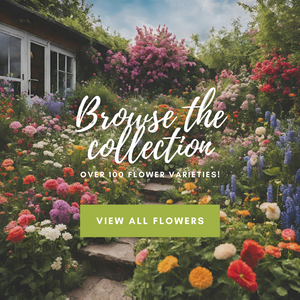
In The Weeds 2: Lawn Terminology You Should Know
Fertilizer

N-P-K/0-0-0: If you've ever bought fertilizer before then you may have noticed this combination of letters on the front or back of the bag, you may also see the letters "N-P-K" but not know what it was referring to.
N-P-K refers to nitrogen, phosphorus, and potassium which are the main elements in every fertilizer otherwise known as macronutrients. Other elements can also be included in fertilizers called micronutrients but they will not be featured in the N-P-K numbers.
0-0-0 refers to the percentages of each pure element in the bag. Our most commonly sold fertilizer is a 50lb bag of 10-10-10, meaning that each bag contains 5 pounds of pure nitrogen, 5 pounds of pure phosphorus, and 5 pounds of pure potassium. That is found by multiplying .10 by 50lbs for each of the numbers.
Lawn Food: This refers to general lawn fertilizers that can be done at multiple points through out the year. A typical lawn food application will feature a nitrogen heavy mix with no phosphorous and a small amount of potassium, such as 25-0-5. This is due to the fact that nitrogen heavily affects the color and vigor of grass while phosphorus is important for root growth which is not necessary for an established lawn. Potassium aids in both areas so a small amount is good for the general health of your lawn. There are also fall lawn foods that are applied to help the grass wake up faster when spring returns.
Starter Fertilizer: is different from lawn food because since starter is used for getting seeds established it will have a more balanced mix and include phosphorus for the roots. Our most commonly sold starter is the Greenview 10-18-10 starter. Recent advancements in fertilizer now allow you to apply it on the same day you plant the seed but you should always check the bag for instructions to be sure.

Weed & Feed: Some of the most common products on the market today & for a good reason! Weed and feeds are combination bags that have herbicides and fertilizer, hence the name. There are a very wide variety of these types of products out today and Rohrer's offers a good selection of them as well. I will explain the different types of weed controls below so that you can make a better decision for your lawn if you decide to do a weed and feed style application.
Weed Control

Pre-emergent: This is a weed control that you apply once, maybe twice, per year because it has a lasting residual effect on the lawn that prevents weeds from germinating. Typically it is done in March-April to prevent a large number of common weeds like crabgrass. Pre-emergents are often granular applications and are a great way to reduce the amount of weeding needed in the summer months. Please keep in mind that if you put down pre-emergent it will also prevent grass seed from germinating as well. Pre-emergent weed control will not harm existing plants with developed root systems.
Post-emergent: is the more common form of weed control applications. Post-emergent weed control will kill active weeds on contact with the application.
There are a very wide range of post-emergent options available on the market in granular and liquid form. Liquid is typically a more common option though because it is

Selective weed control: Selective vs non-selective refers to types of plants killed by the application being used. Selective herbicides are used to remove weeds from the lawn without harming the grass, they are the most common option for weed control. There are lots of different options for selective herbicides but 2,4-D is the most popular. Always be careful with the amount of product you use on the lawn because too much weed control will burn the grass out just the same as doing too much fertilizer.

Non-selective weed control: are applications that will kill all plants regardless of what they are. Glyphosate based products are the most common non-selective herbicide on the market today. Non-selective applications are often used to completely clear plots or lawns so that you can start from zero again. For the lawn, this should be considered a last ditch effort because it will remove good grass and weeds all the same. Another good use for non-selectives is controlling weeds that come through cracks in walkways and driveways.




Leave a comment